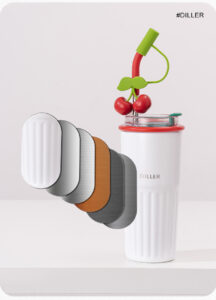In the new era of 2025 personalised consumption, customised water bottles have become a popular choice for corporate promotions, event commemorations and personal life as well as gift-giving.
First, clear use of the scene and core needs
Three key elements need to be confirmed before customisation:
Cup type: need to determine whether it is insulated water bottles, plastic water bottles or glass water bottles
Use of objects: corporate customers gifts recommended stainless steel with double-wall vacuum technology, activities can be considered lightweight plastic giveaways, personal daily use of recommended food-grade Tritan materials
Functional requirements: outdoor sports need to be equipped with leak-proof drinking port, office scenarios recommend adding tea filter layer, children should be configured with anti-scald silicone sleeve
Visual orientation: business style recommended monochrome laser engraving, fashion trends suitable for gradient colour heat transfer printing, public service publicity can be printed with environmentally friendly ink.
Second, the golden rule of material selection
| Material type | Applicable scene | Printing process |
| 304 stainless steel | High-end gifts/long-term use | Laser engraving/baking paint |
| Tritan plastic | Daily use/children’s cups | Screen printing |
| Glass | Home/catering | Acid etching/UV printing |
| Folding Silicone | Outdoor Sports | Pad Printing Technology |
It is recommended to give preference to food-grade materials that have passed FDA and LFGB certification, and the range of contact water temperature needs to cover -20℃ to 100℃.
Third, the key steps of the design landing
Pattern processing: vector graphics resolution to maintain more than 300dpi, gradient colour blocks need to be converted to CMYK mode. Corporate LOGO is recommended to reserve a safe margin (more than 2cm from the cup)
Process matching: 3D spray glaze technology is used for three-dimensional relief effect, digital direct spraying is recommended for complex patterns, and laser laser is preferred for text content.
Sample confirmation: manufacturers are required to provide physical samples, focusing on checking printing fastness (3M tape test method), colour deviation (ΔE≤3) and assembly precision.
The customised case study of a famous tea drink brand shows that the use of double-layer structure design (outer layer of frosted coating + inner layer of mirror engraving) has increased the brand exposure rate by 70% and the reuse rate by 3 times.
It is recommended to choose manufacturers that provide IP protection (dust and waterproof) certification, and prioritise production sites with ISO9001 and BSCI certification.


